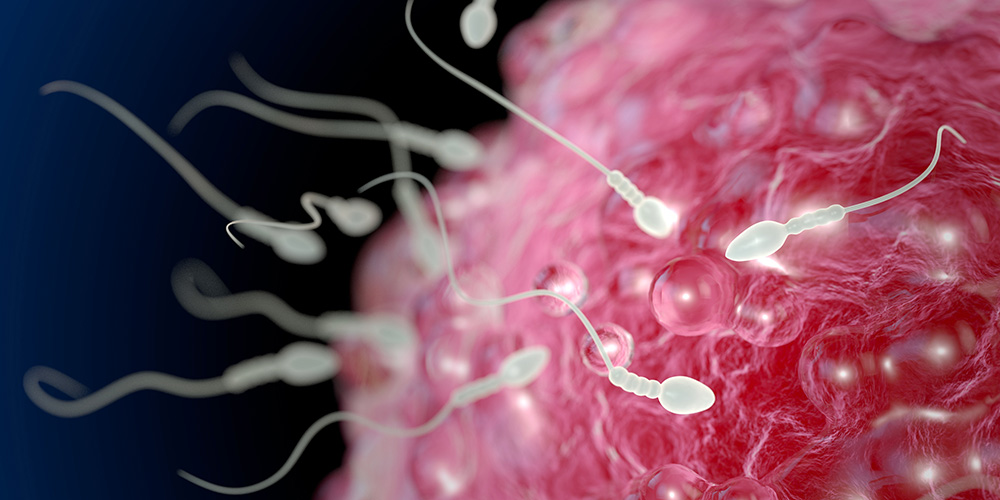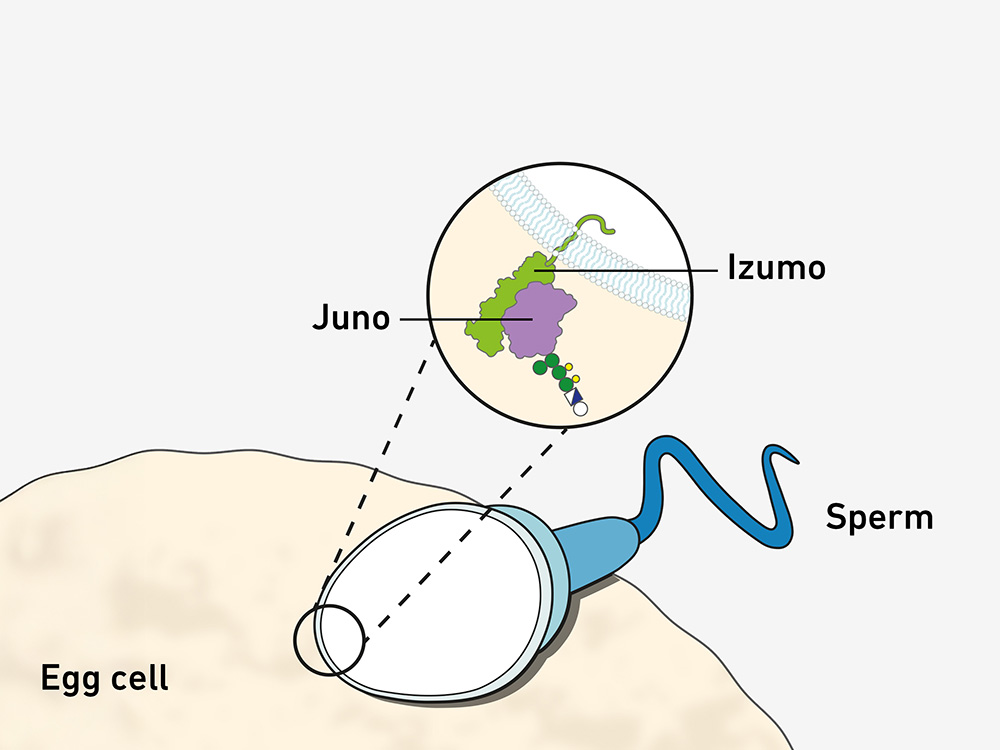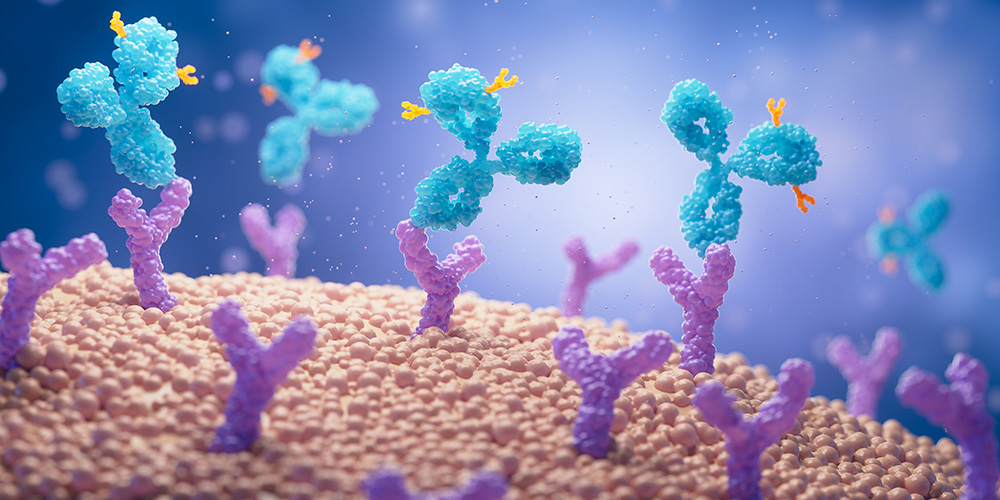How the egg cell and sperm hold together so tightly
Once a sperm has broken through to an egg cell in order to fertilise it, the two cells need to hold together tightly. This occurs via a type of protein binding that is among the strongest in biology – and it is also unique.
20 October 2025
An egg cell and a sperm need to hold together tightly in the Fallopian tube in order to fuse, resulting in the creation of a new organism. One key part of this process involves the proteins Juno, on the egg cell membrane, and Izumo, on the sperm. Like a lock and key, these two proteins fit together and cling to one another. Now, researchers from ETH Zurich and the University of Basel have shown that a special type of binding occurs between Juno and Izumo – and that it is one of the strongest ever discovered in the world of higher organisms.
A sperm needs to work hard to make it as far as the egg membrane in the first place. Propelled by its flagellum – a rotating, whip-like appendage – it first fights its way through two protective layers that surround the egg.
Once the sperm has succeeded in doing this and reached the egg cell membrane, it needs to hold tight and buy time. This is necessary because the membranes of the egg cell and sperm must first be reorganised so that they become more flexible and can fuse with one another. Furthermore, key membrane proteins must be brought together in the right location in order for fusion to take place. For minutes, the flagellum on the back of the sperm lashes around wildly, while at the front, the strong binding of the Juno–Izumo protein pair ensures that the sperm does not break away from the egg cell.
Finger-wrestling on the nanoscale
Researchers in Zurich and Basel took a closer look at the proteins Juno and Izumo separately from the egg cell and sperm. In the laboratory, they measured the interaction between individual Juno and Izumo proteins using an atomic force microscope to determine how well they could hold together under tensile force. The measuring principle is similar to when two people link their middle fingers and then pull until the link breaks.
In this way, the scientists demonstrated that Juno and Izumo behave differently from most known protein pairs, which bind to one another according to the lock-and-key principle. Protein bindings of this kind generally don’t last forever – and most hold on for less time the stronger you pull on them.
That is not the case with Juno and Izumo. “Under tensile forces such as those generated by the sperm, the binding becomes more stable rather than less,” explains Viola Vogel, a professor at the Department of Health Sciences and Technology of ETH Zurich. “Accordingly, the binding actually holds for longer under tension than with no force applied.” This connection, which gets stronger when subjected to tensile force, is what researchers call a catch bond.
Vogel and her colleagues carried out their study in collaboration with the group led by Michael Nash, a professor at the University of Basel and the Department of Biosystems Science and Engineering of ETH Zurich in Basel. The researchers published their results in Nature Communications.
One of the strongest types of adhesion
Using model calculations at the Swiss National Supercomputing Centre CSCS in Lugano, the researchers were also able to show how the catch bond mechanism of the two proteins works: when the proteins are pulled apart, some bonds between atoms on one protein and the other break, but the proteins themselves twist closer together at the same time, with the protein Juno completing a quarter turn. This results in the creation of new atom–atom bonds that prolong the time the proteins can hold on to each other.
The researchers’ measurements showed that, under tension, the binding between Juno and Izumo is actually among the strongest in the realm of multicellular organisms. Similarly strong bonds exist between proteins in muscle fibres in order to prevent the fibres from tearing. Other cells that need to bind to surfaces in the body also do so using proteins that form catch bonds. Examples include immune cells which cling to the inside of blood vessels, or skin cells formed during wound healing, which cling to fibres in the wound environment.
Known mutation weakens protein binding
Lastly, the researchers also investigated the effects of a known genetic mutation that affects 1 in 600 women worldwide. In these women, there is a change in one building block of both the Juno gene and the Juno protein. This mutation is suspected of causing reduced fertility.
The scientists also analysed proteins with this modification in the laboratory and using computer simulations. They were able to show that, in the case of tensile forces such as those occurring when the sperm beats its flagellum, the binding with a modified protein breaks faster. “This doesn’t give the sperm and egg cell enough time to initiate fusion or, therefore, fertilisation,” explains Vogel.
Now that a mechanism of action has been identified to underpin the suspected relationship between this mutation and infertility, the next step could be to develop genetic tests with a view to diagnosing this cause of infertility. Moreover, the findings could facilitate the development of therapeutic strategies to help couples fulfill their desire to have children.
This text is based on an article by ETH Zurich.
Original publication
Boult S, Pacak P, Yang B, Liu H, Vogel V, Nash MA
Force-dependent reorganization and mechanostability of the Izumo1:Juno complex involved in human fertilization.
Nature Communications (2025), doi: 10.1038/s41467-025-62427-0



